Inviting woodwork, honest materials, and handcrafted details define a Craftsman dining room, and each element— from a quarter-sawn oak sideboard to a prairie-style stained-glass pendant— can make your meals feel rooted in tradition yet completely livable. Rich wall treatments such as wainscoting and picture rails historically protected plaster while offering a canvas for art display. Today, you can still see these millwork lines framing tables on design-sharing sites that celebrate real Arts & Crafts interiors. Natural rugs woven in muted earth tones soften the hardwood underfoot and echo the movement’s love of nature-inspired motifs. The twenty ideas below show how to weave these classic cues into a fresh, functional dining space—one thoughtful layer at a time.
1. Built-In Sideboard Anchors the Craftsman Dining Room
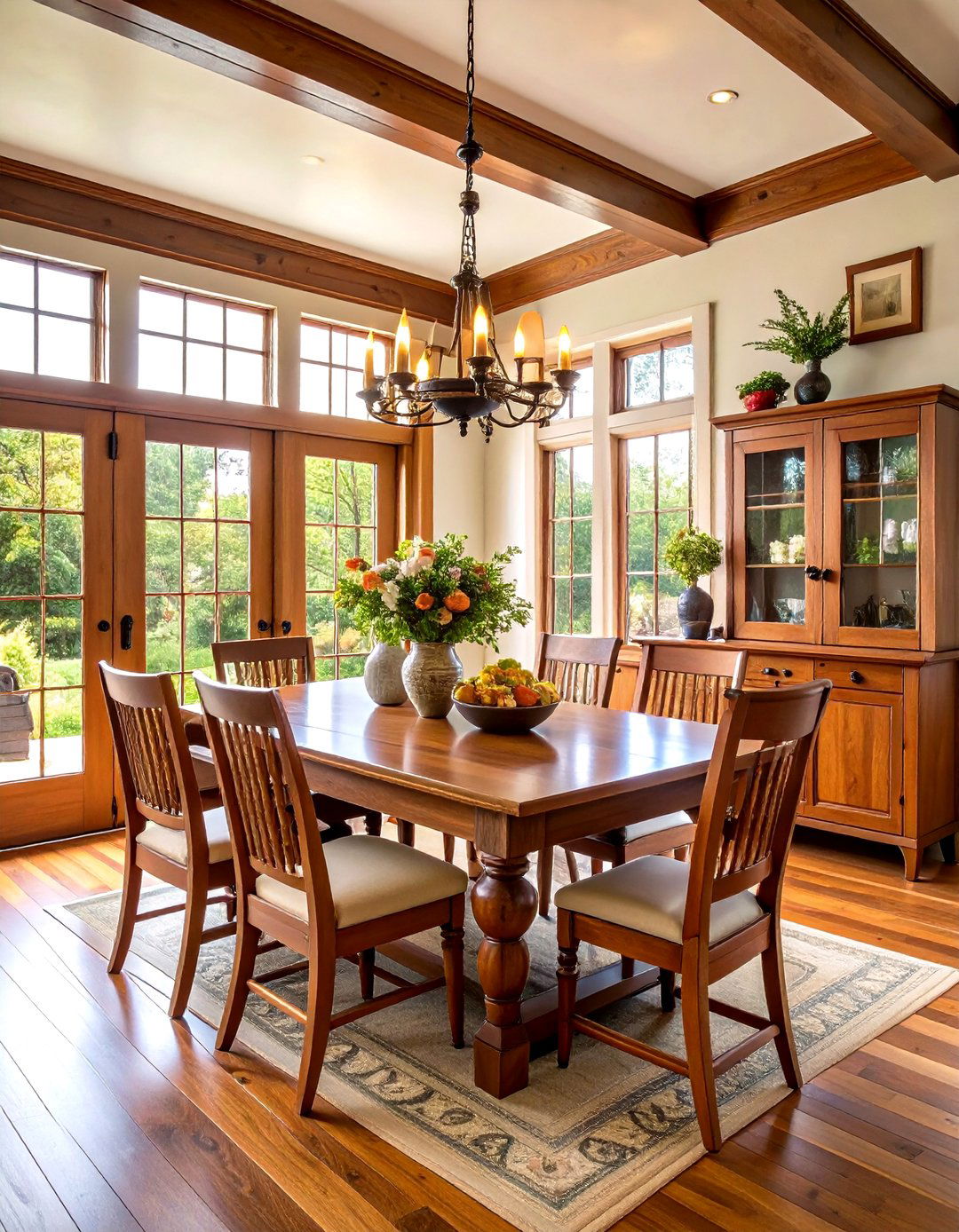
An inviting built-in sideboard instantly tells visitors they’ve entered a true Craftsman dining room. Imagine a recessed cabinet made from quarter-sawn white oak whose tight, flake-patterned grain glows under a hand-rubbed finish. The piece doubles as storage and sculpture: drawers corral linens, while glass-front uppers display heirloom stoneware without eating up floor space. Because the unit is built into the wall, it eliminates the need for a bulky china hutch, keeping circulation paths clear during big gatherings. Add period-accurate metal pulls and stained-glass door panels, and the buffet becomes a functional focal point that frees your table from clutter while reinforcing the room’s architectural bones.
2. Quarter-Sawn Oak Table Grounds the Craftsman Dining Room
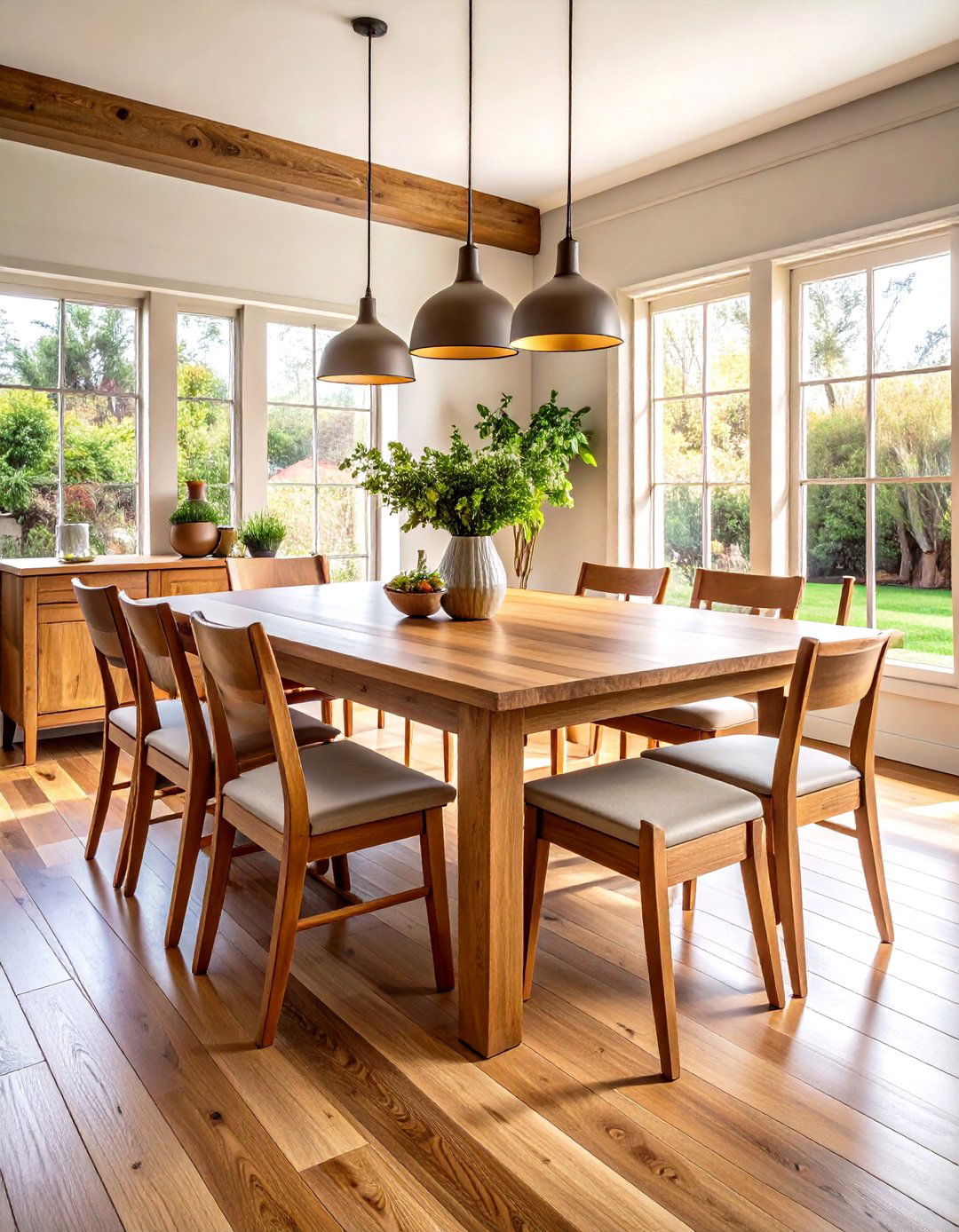
Few furnishings embody Arts & Crafts ideals like a substantial quarter-sawn oak dining table, and making it the centerpiece of your Craftsman dining room sets an unmistakable tone. The straight grain resists warping and shows shimmering medullary rays prized by mission-style makers. Choose simple square legs or a trestle base with through-tenon joinery so guests see authentic construction, not applied ornament. Over time the solid wood surface will develop a mellow patina that tells family stories with every birthday-candle scorch. Because the style prizes proportion, allow at least three feet of clearance around the tabletop so the craftsmanship—and your circulation—can breathe.
3. Stickley-Inspired Chairs Elevate Craftsman Dining Room Seating
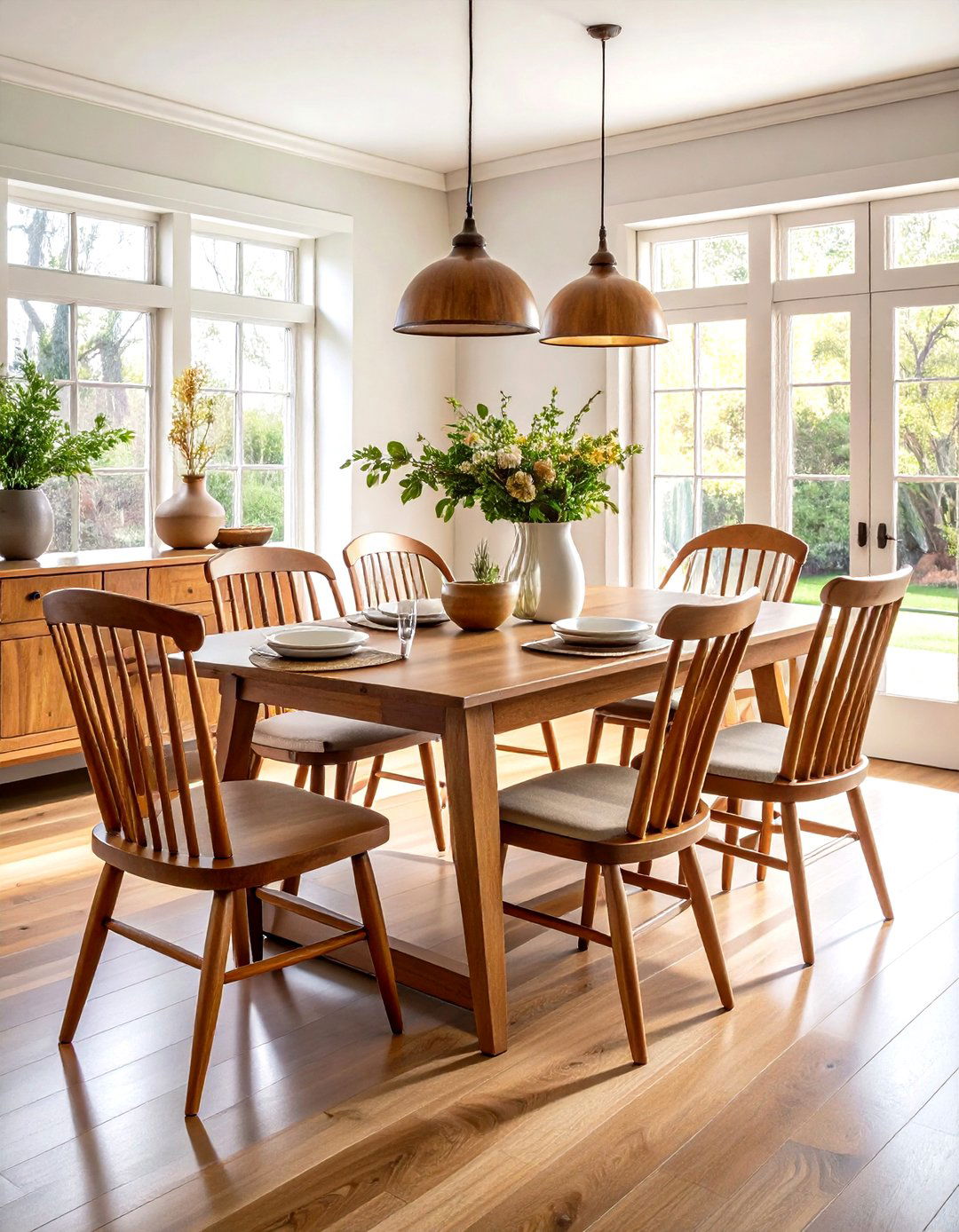
Balance the hefty table with high-back chairs that echo Gustav Stickley’s original mission designs. A Harvey Ellis side chair, for example, pairs slender vertical slats with delicately arched seat rails to feel light yet sturdy. The subtle inlay or ebonized pegs quietly celebrate woodworking skill instead of flashy upholstery. In a Craftsman dining room, repeating these chairs along the long table edge creates rhythmic lines that harmonize with ceiling beams above. Opt for leather or wool-blend seat pads in earthy hues; both materials age gracefully and can be re-dyed rather than replaced. The result is seating that invites lingering conversation without visual fuss.
4. Box-Beam Ceiling Frames the Craftsman Dining Room in Warm Wood

Look up: a coffered or box-beam ceiling instantly lends gravitas to a Craftsman dining room. Exposed wood beams visually lower lofty proportions, making meals feel intimate while reinforcing the movement’s celebration of visible structure. Stain the beams a shade darker than window casings so the grid stands out, and choose flat-sawn pine panels between beams to keep costs manageable. If overhead height is limited, faux beams fashioned from lightweight boards still deliver texture without extra weight. Conceal LED ribbon lights in the beam edges to wash the table in a warm amber glow that flatters food and wood grain alike.
5. Wainscoting and Picture Rail Define Craftsman Dining Room Walls
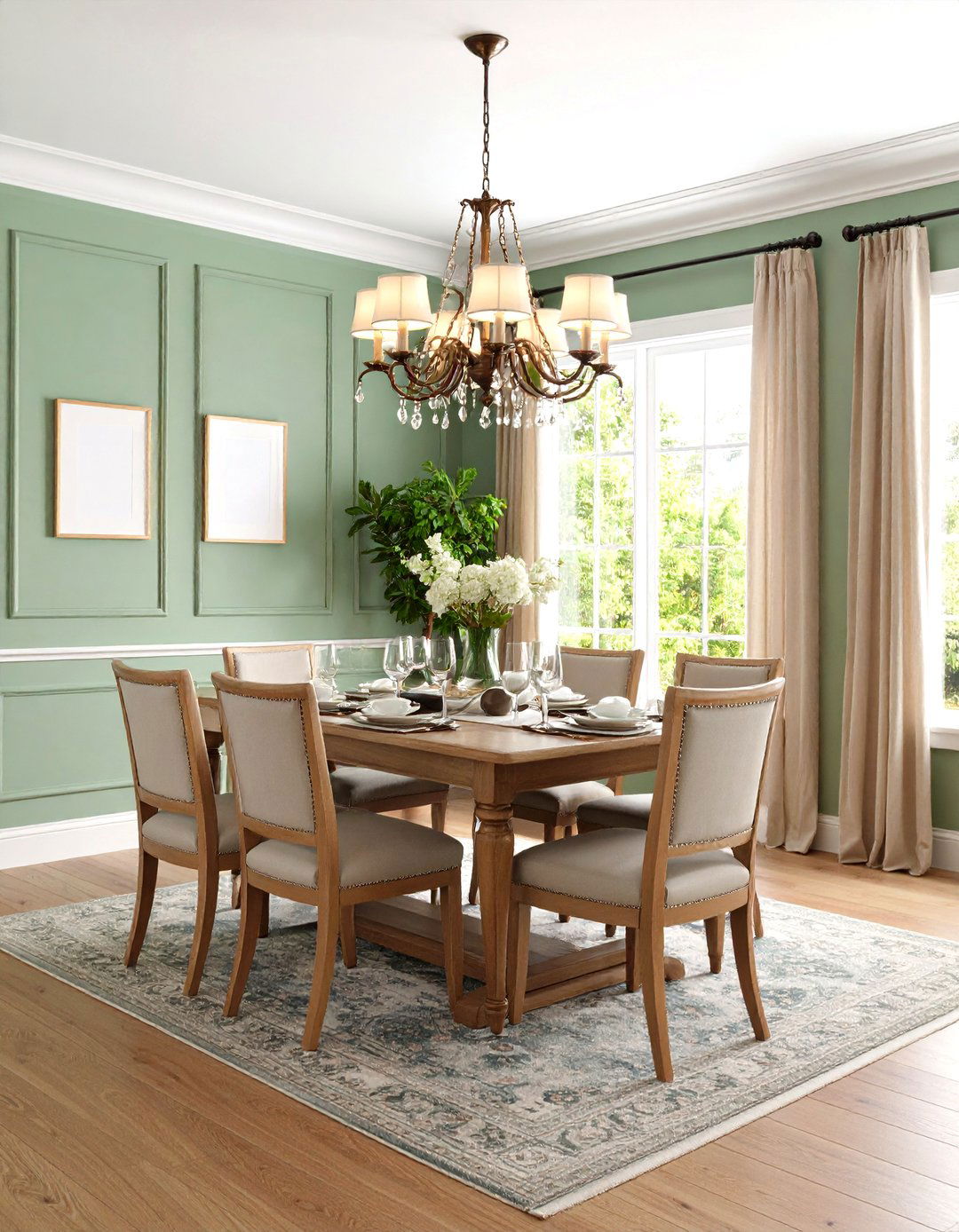
Walls in early-twentieth-century homes rarely sat bare, and adding a chair-height wainscot with a picture rail above instantly roots your Craftsman dining room in that lineage. Traditional tongue-and-groove boards or flat oak panels shielded plaster from sliding chairs and breakfast splatters before drywall existed. About a foot below the ceiling, a slim picture rail lets you hang artwork on hooks and braided cord without ever touching the wallpaper or paint, making seasonal refreshes painless. Paint the upper wall a soft sage while leaving the millwork natural; the two-tone approach highlights the horizontal lines so revered in the style.
6. Earth-Toned Palette Wraps the Craftsman Dining Room in Calm
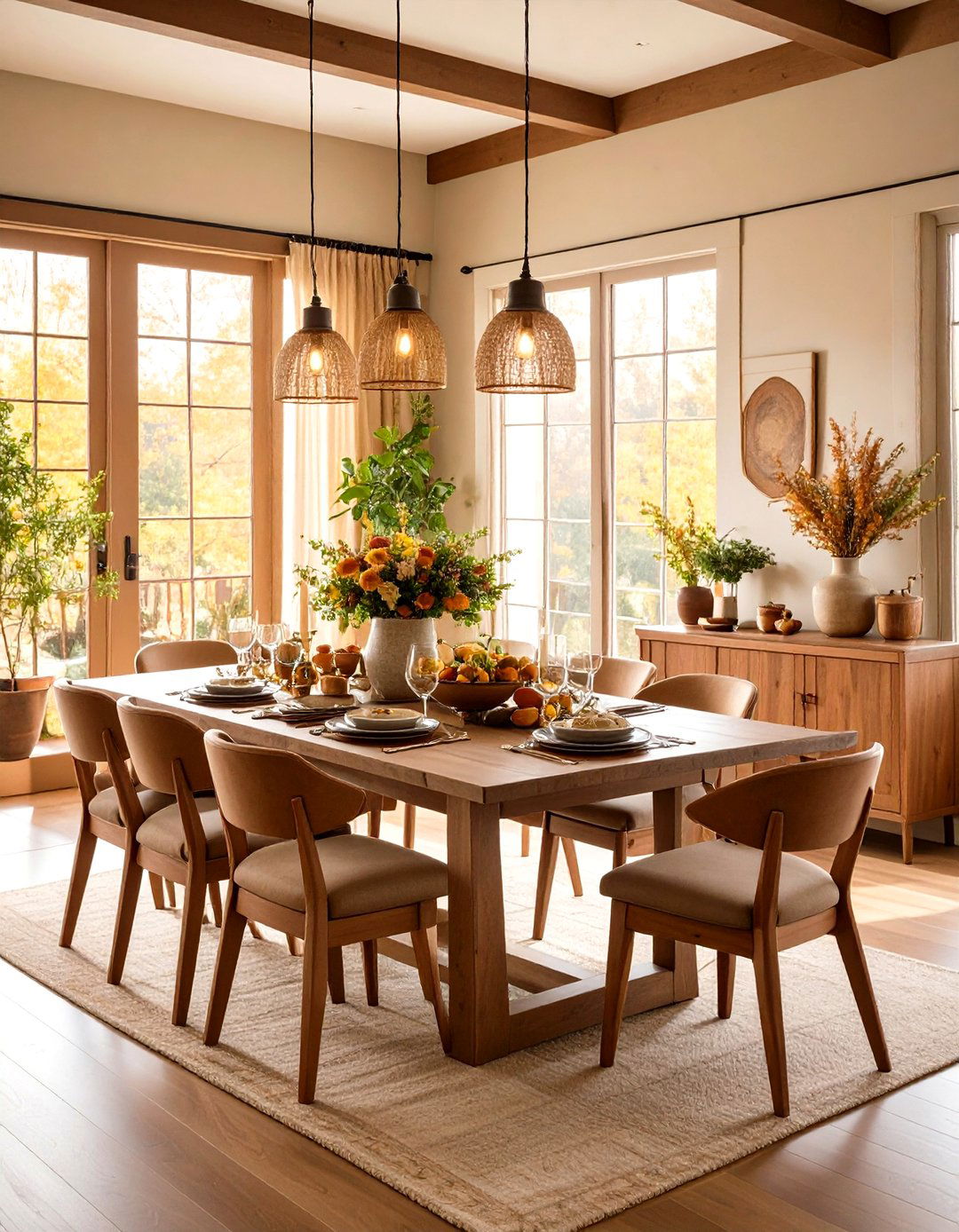
Color in a Craftsman dining room should feel as though it walked in from the garden. Think mossy green, burnt sienna, warm wheat, and muted indigo—hues historically mixed to complement the haystack glow of oak furniture. When these colors cloak walls or textiles, they make the wood appear richer and the space more welcoming for long dinners. If you’re hesitant to paint all four walls, try a russet accent ceiling that draws eyes upward to box beams. Finish with a matte sheen so light diffuses softly, echoing the movement’s preference for subtle, nature-inspired surfaces.
7. Prairie-Style Stained Glass Illuminates the Craftsman Dining Room
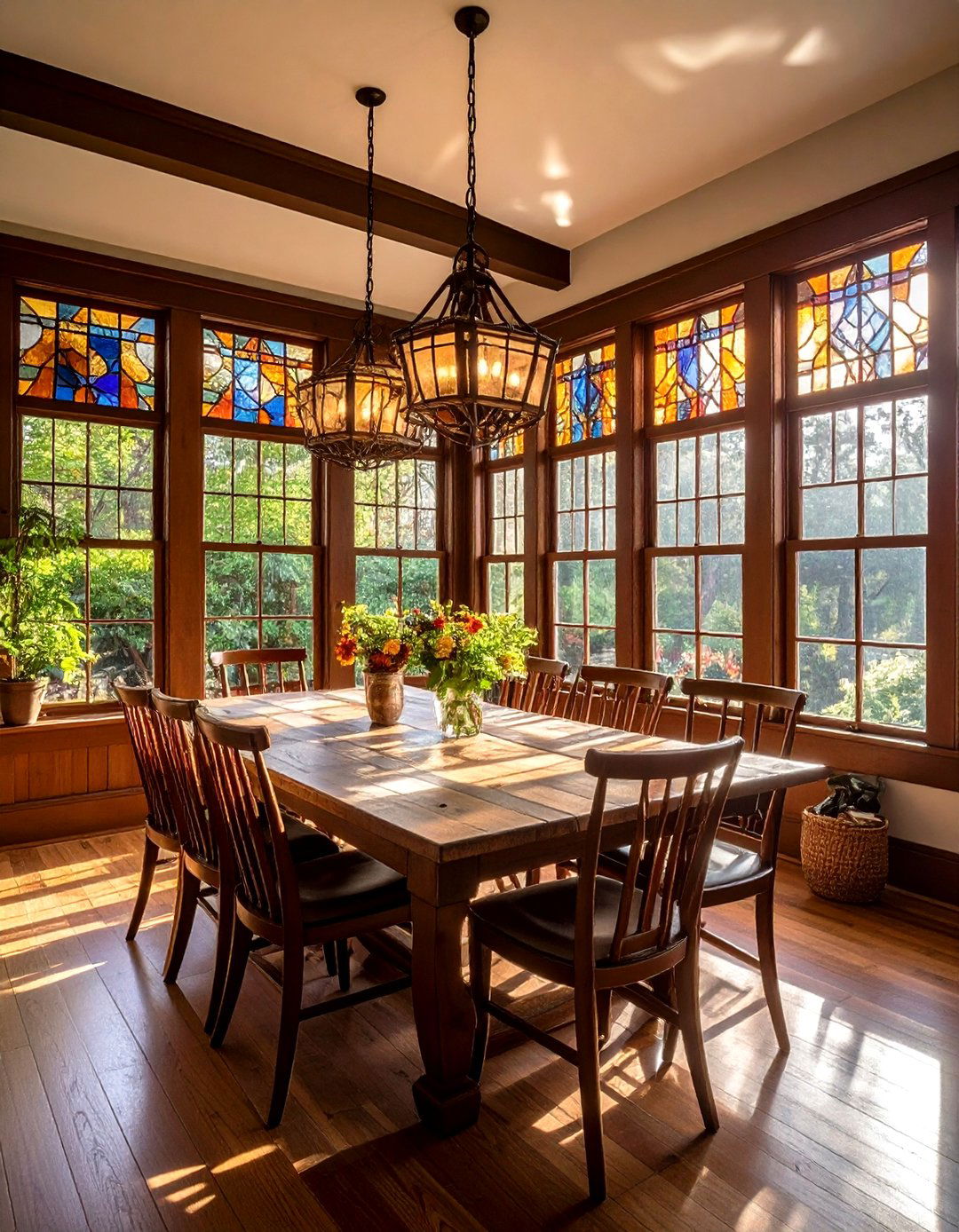
A single pane of geometric stained glass can flood a Craftsman dining room with the jewel-like glow Frank Lloyd Wright made famous. Prairie-school patterns rely on straight lines and gentle earth-tone glass rather than ornate Victorian curves, allowing light to ripple across the table without distraction. Install leaded inserts in upper cabinet doors or commission a transom panel that echoes the window’s proportions. If new windows aren’t an option, hang a framed art-glass panel in front of an existing sash; the piece can travel with you and doubles as wall art at night when a sconce backlights it.
8. Hammered Copper Lighting Warms the Craftsman Dining Room Glow
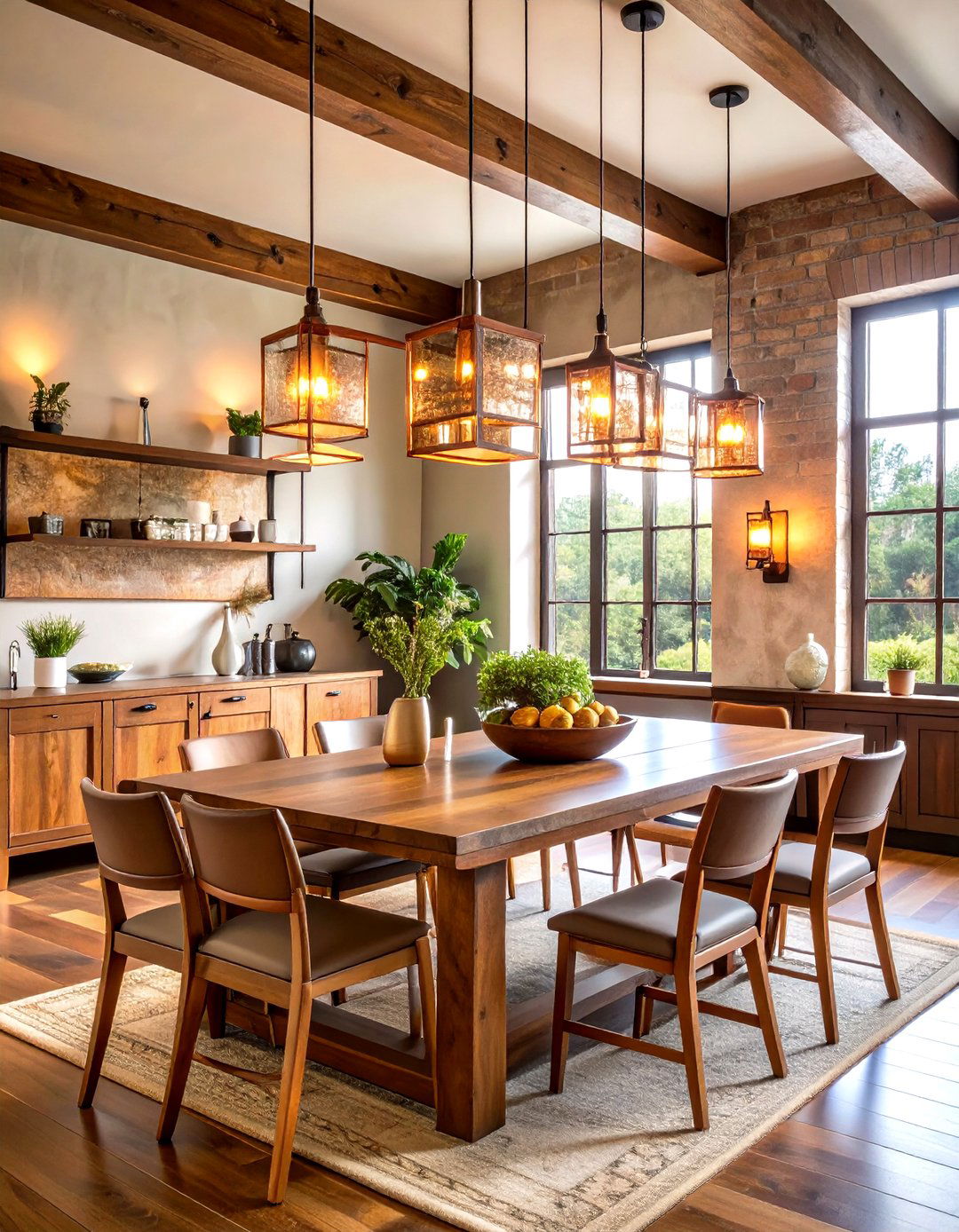
Hammered metal fixtures bridge utility and artistry, and copper’s reddish undertones cast a candle-like warmth perfect for a Craftsman dining room. Antique Arts & Crafts lanterns with mica or slag-glass shades are still plentiful, while modern makers offer hand-riveted pendants that honor the originals’ honest joinery. Suspend a rectangular fixture parallel to the table so light spreads evenly, then flank a built-in buffet with matching copper-strapped sconces to pull the glow around the perimeter. Copper naturally darkens over time; that evolving patina tells a story while harmonizing with prairie-style stained-glass hues.
9. Hand-Knotted Wool Rug Softens the Craftsman Dining Room Floor
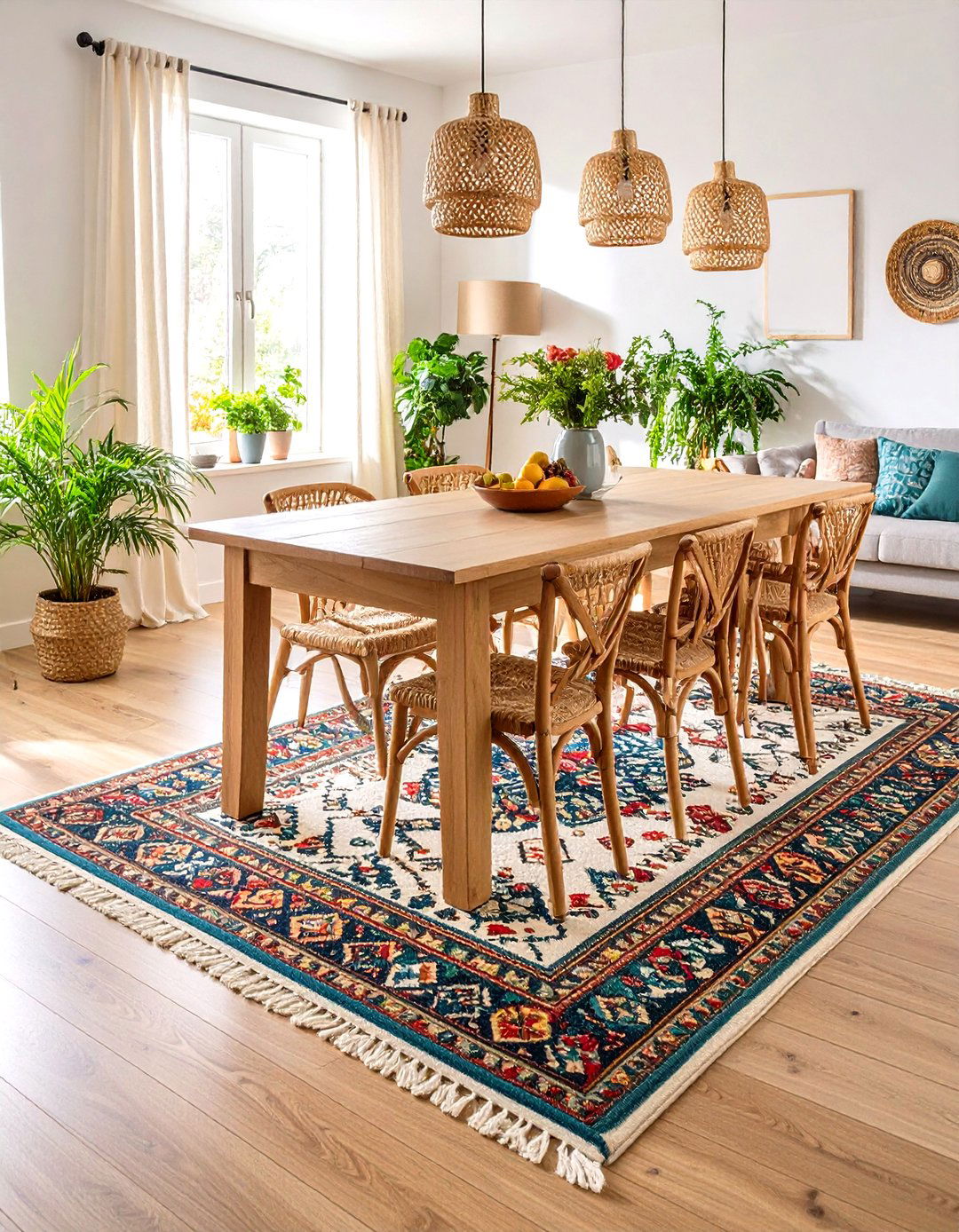
Underfoot comfort matters when dinner stretches into dessert, and a hand-knotted Arts & Crafts wool rug completes a Craftsman dining room without hiding its handsome flooring. Look for motifs borrowed from William Morris—ginkgo leaves, stylized vines, or abstract waves—rendered in terracotta, indigo, and olive so spills are forgiving and colors feel timeless. Because wool fibers naturally repel stains and regulate temperature, guests’ feet stay cozy in winter and cool during summer gatherings. Choose a size that extends at least 24 inches beyond chair legs so fabric remains flat even when seats glide back, maintaining trip-free elegance.
10. Colonnade Divider Gives the Craftsman Dining Room Subtle Separation
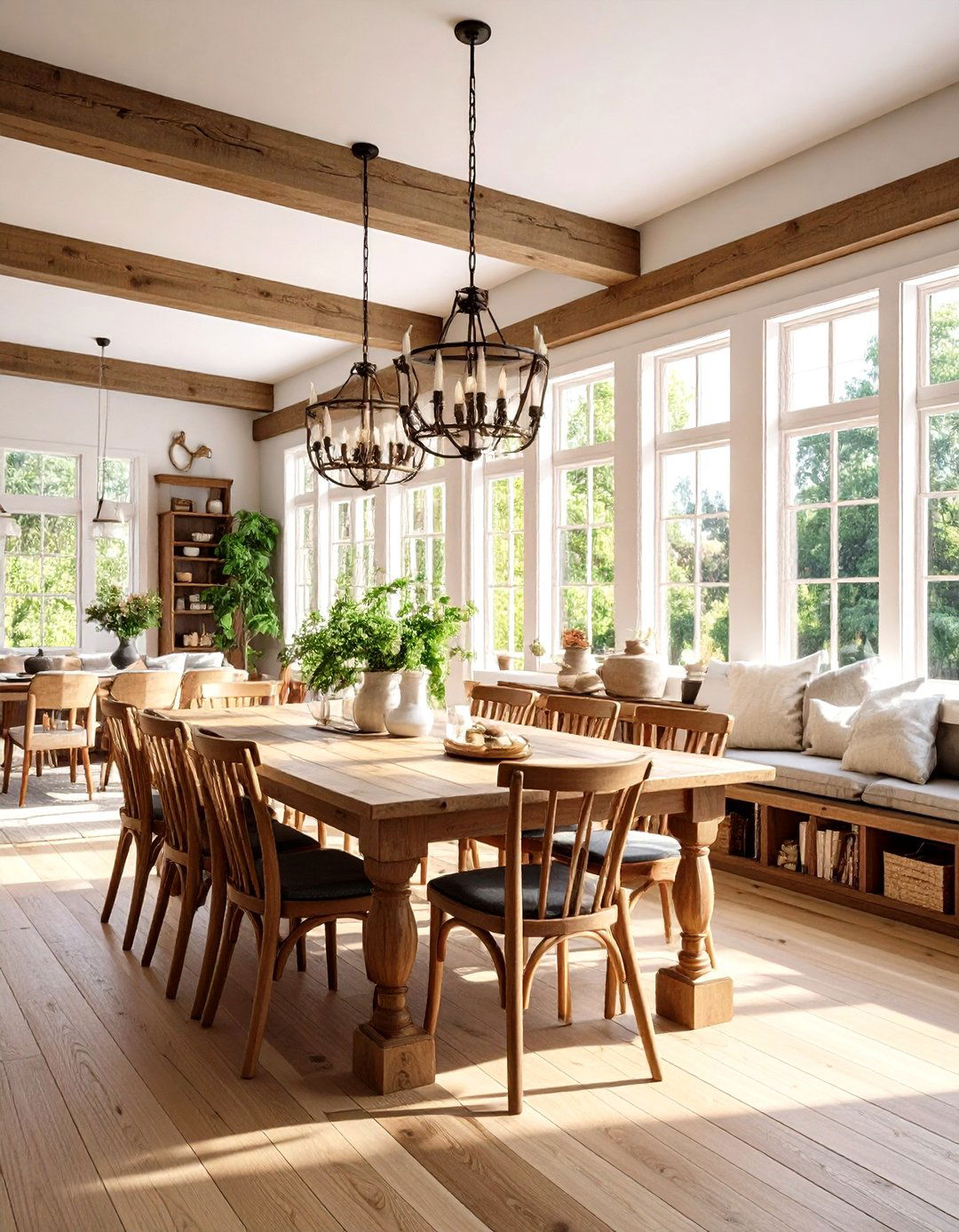
Many early bungalows used tapered wood colonnades to hint at room divisions while preserving open sightlines, and reviving that idea can make a Craftsman dining room feel connected yet distinct from the living area. Square box columns rest on low bookcases or buffet cabinets, providing display space for pottery while supporting a shallow beam overhead. The built-ins create a natural threshold for conversation flow: people leaning against the bookcase can chat with cooks, while diners still enjoy an intimate nook. Paint only the recessed panel backs a muted accent to highlight treasured ceramics without overwhelming the contiguous architecture.
11. Open Shelves Highlight Handcrafted Pottery in the Craftsman Dining Room
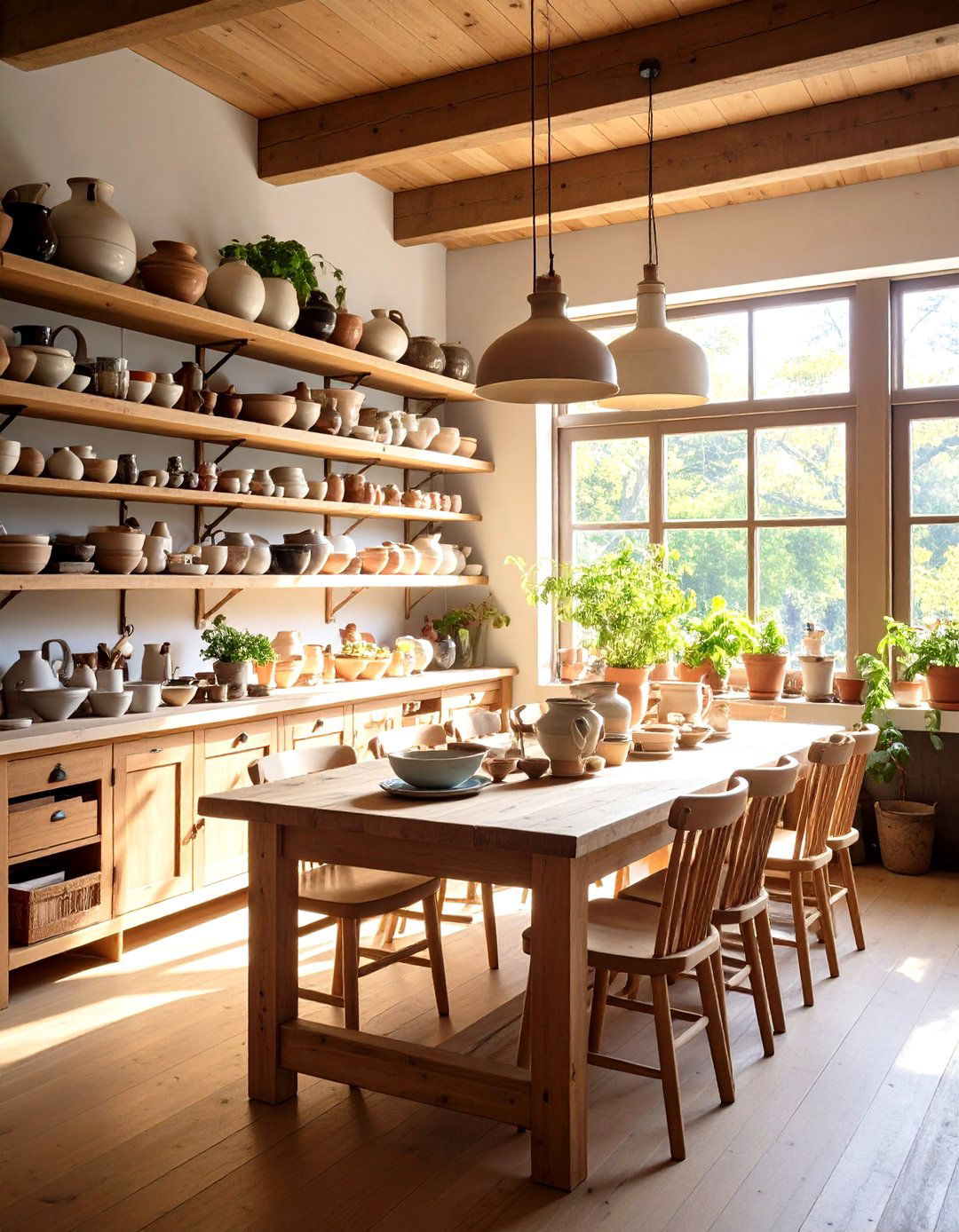
Displaying handiwork is central to Arts & Crafts philosophy, so dedicate a wall of open shelves in your Craftsman dining room to studio pottery and enamelware. Arrange pieces by color gradients rather than rigid sets; the irregularity honors the movement’s human touch. Solid wood shelves supported by simple corbels echo Stickley furniture profiles while keeping eyes on the objects. Position accent lighting inside the shelf cavity to create dramatic shadows that celebrate each glaze ripple. As seasons change, rotate bowls for fresh palettes yet maintain that constant handmade heartbeat your dinner guests will notice immediately.
12. Window Seat Invites Relaxed Conversation in the Craftsman Dining Room
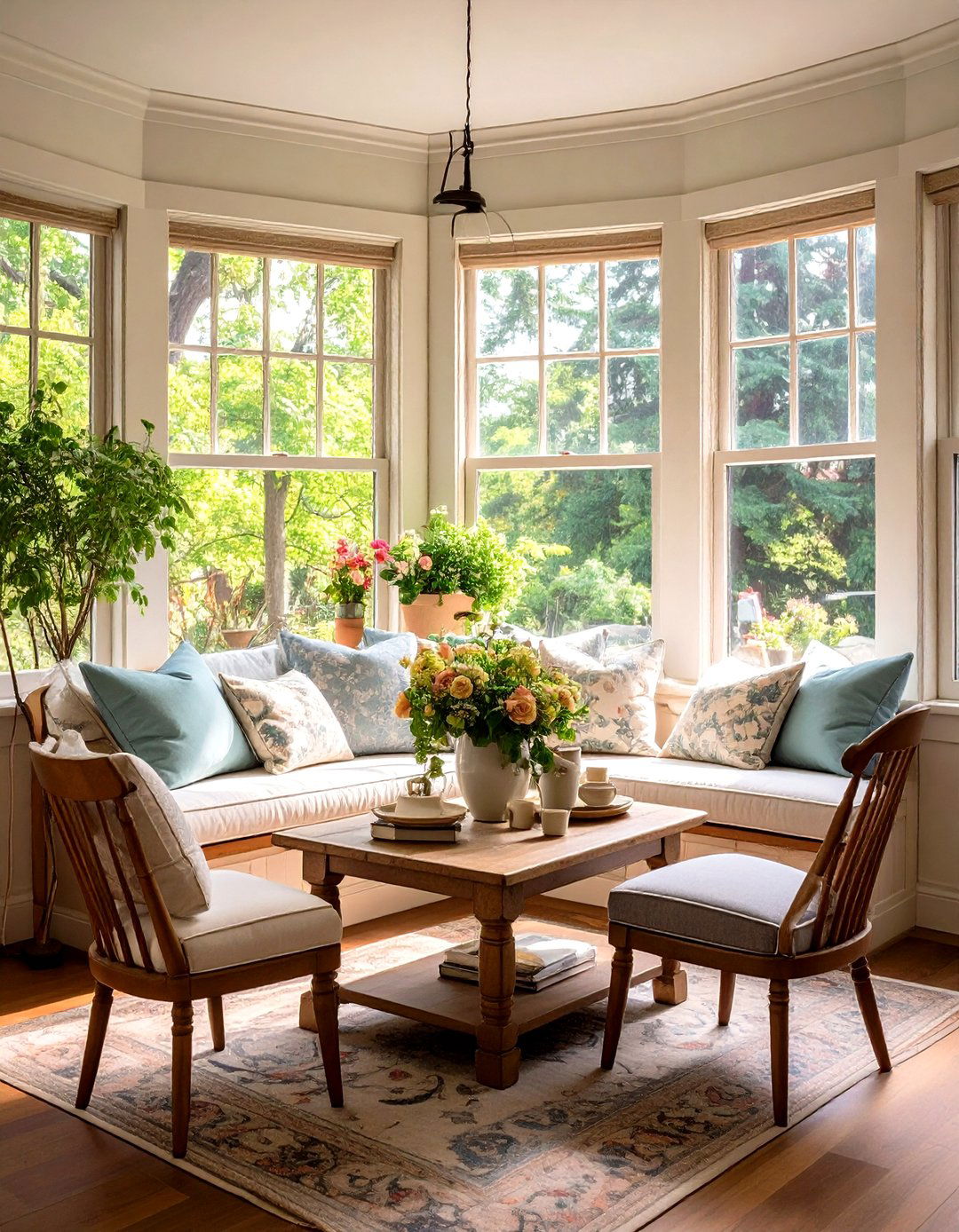
Consider transforming a bay window into a cushioned seat where guests can linger over coffee after the table is cleared. Craftsman interiors often tuck nooks under generous windows to maximize daylight and blur indoor-outdoor boundaries. Build the bench from the same oak used elsewhere and hinge the seat to hide table linens or board games. Upholster the cushion in a William Morris reproduction fabric so pattern depth nods to history without feeling costume-y. Toss a couple of leather-trimmed pillows, and the window seat becomes the most coveted perch during family gatherings or solitary afternoon reading.
13. Art-Glass Chandelier Crowns the Craftsman Dining Room Table
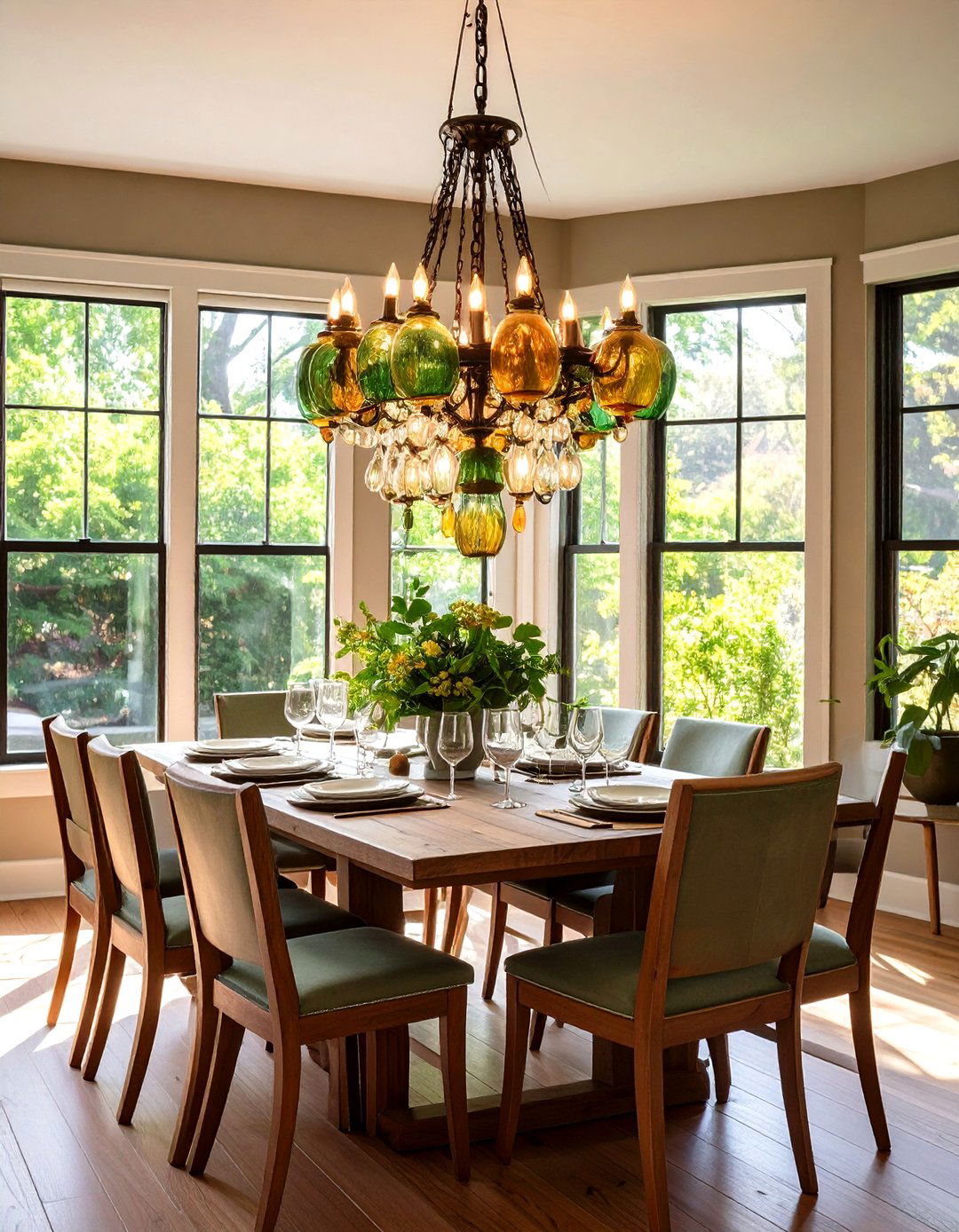
Replacing a generic fixture with an art-glass chandelier can single-handedly elevate a Craftsman dining room. Prairie-inspired shades diffuse light through wheat-gold and river-green glass, bouncing subtle color on dinnerware without harsh glare. Choose a rectangular eight-light oblong pendant to illuminate the entire tabletop, ensuring every dish looks appetizing. Complement copper framing with matching hardware on cabinets for visual continuity. To avoid shadow hot spots, dim the chandelier to 60 percent and supplement with wall sconces; layered lighting lets the room transition from homework station to candlelit supper with a single touch.
14. Nature-Motif Frieze Adds Personality to the Craftsman Dining Room
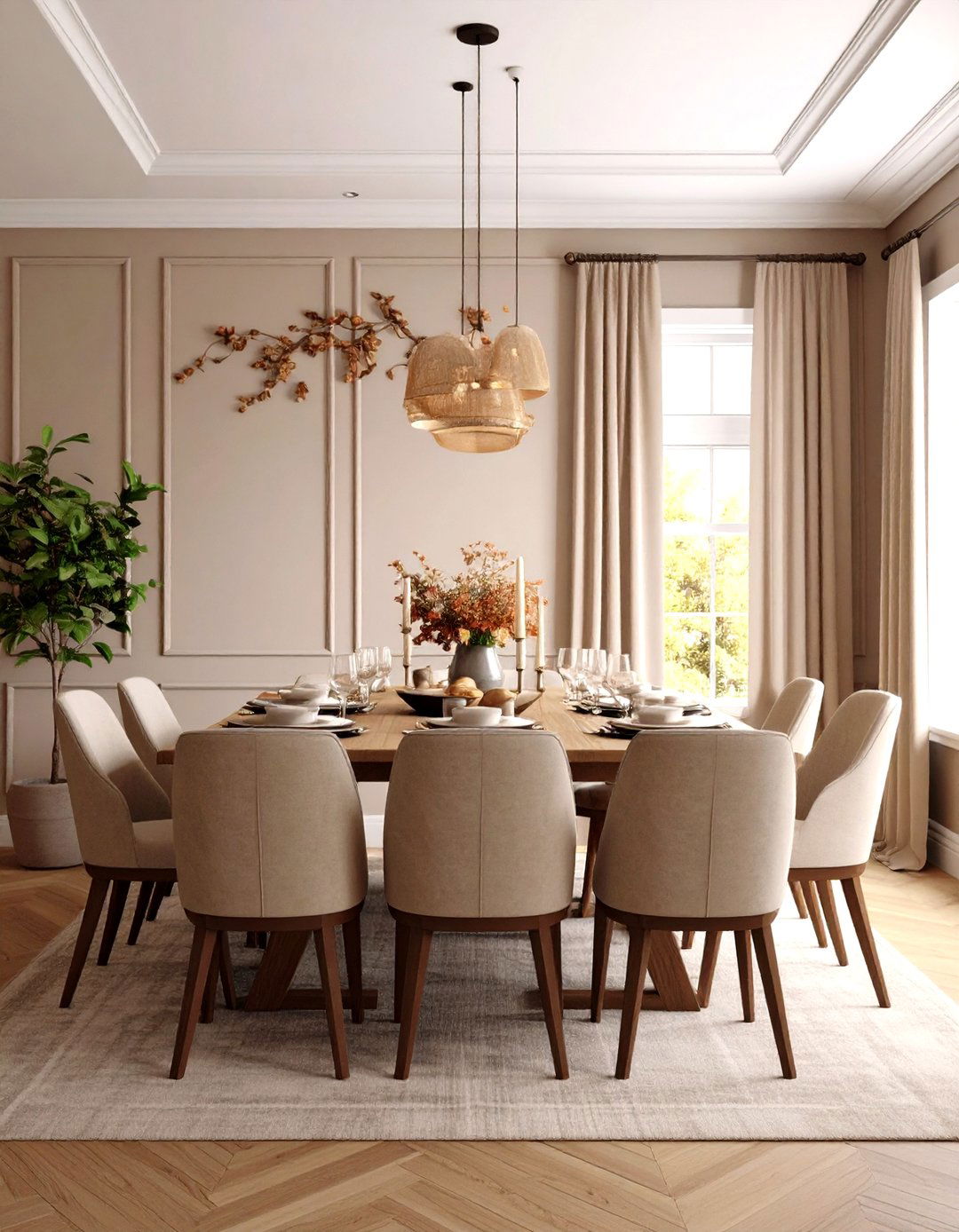
Unlike ornate Victorian paper, Arts & Crafts wall stencils use stylized vines, poppies, or pine cones in restrained repeat patterns. A twelve-inch frieze running just above the picture rail frames the Craftsman dining room like crown molding but with softer edges. Mix two analogous paint tones so the motif reads as texture rather than bold graphic; this approach keeps focus on furniture grain. If you’re renting, peel-and-stick wallpapers offer temporary nods to nature without commitment, and they peel cleanly from properly primed walls when it’s time for a new palette.
15. Mission-Style Hardware Completes Drawers in the Craftsman Dining Room
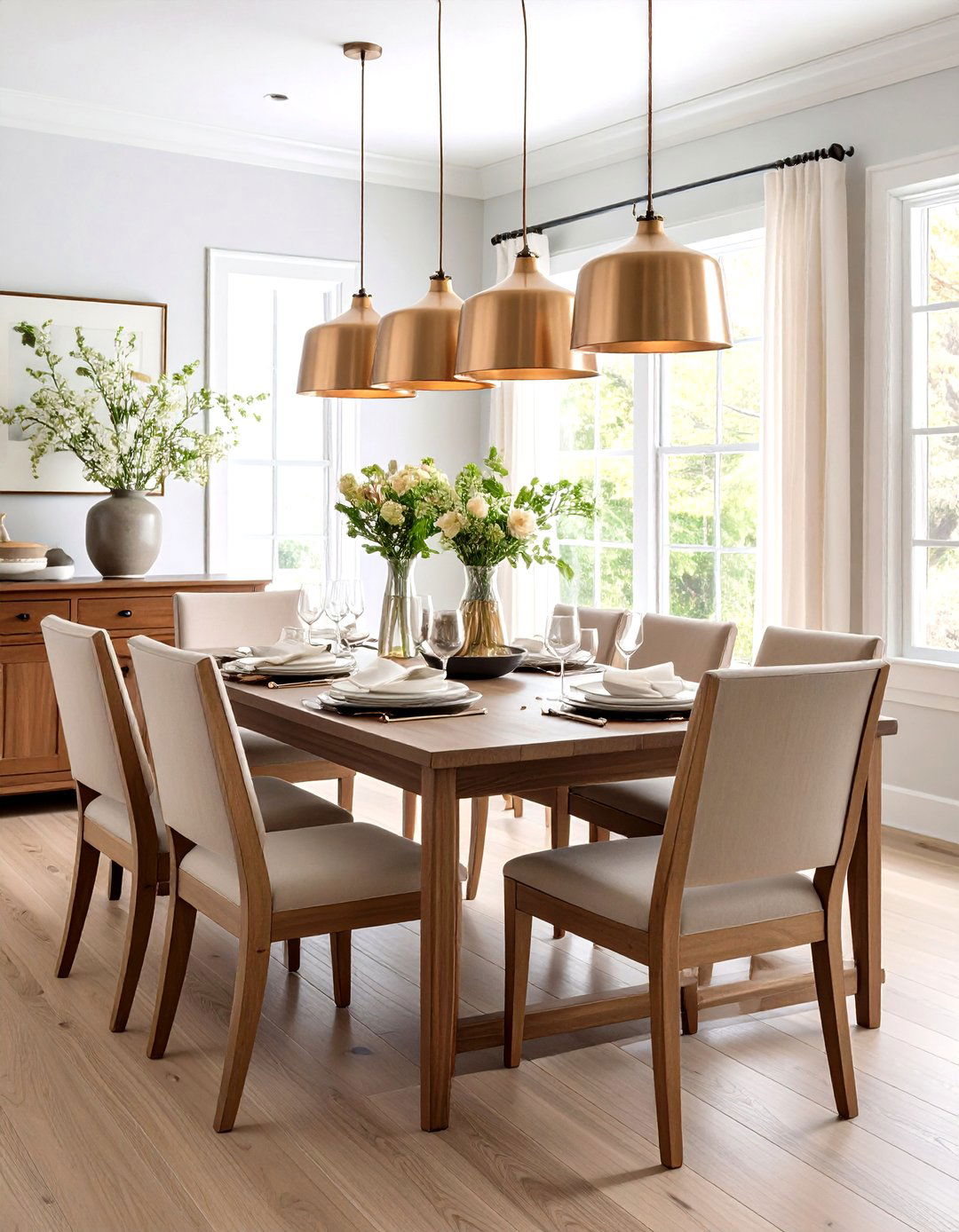
Little details carry big weight in a Craftsman dining room, so swap generic knobs for square-edged mission pulls in hand-rubbed bronze or blackened iron. Furniture makers choose exposed mortise-and-tenon joinery to show honesty, and hardware should follow suit with visible screws rather than hidden clips. Matching metal across buffet, built-ins, and interior doors unifies the room without resorting to flashy finishes. Period-authentic backplates also protect wood frontals from fingernail dents—a practical benefit if children help set the table. Over time, natural oils from hands darken the metal, creating a living finish that mirrors the patina of surrounding oak.
16. Beam Cove Lighting Highlights the Craftsman Dining Room Ceiling
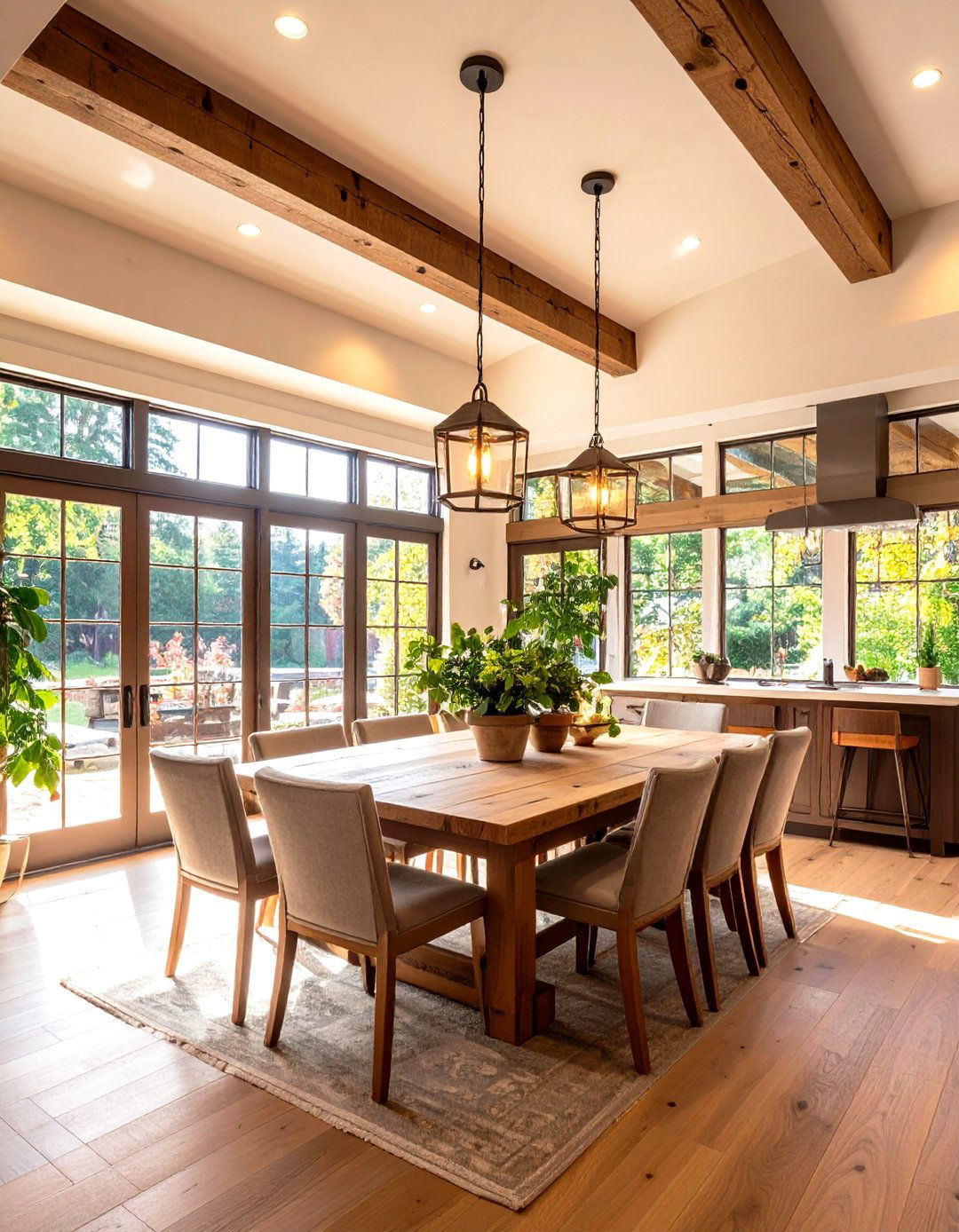
Subtle LED strips hidden in recessed coves atop ceiling beams can bathe a Craftsman dining room in indirect glow that shows off the wood without visible bulbs. Because box beams already form natural ledges, you can tuck warm-tone strips behind a small lip, allowing light to bounce off the plaster between beams for an evening lantern effect. Pair the LEDs with a dimmable driver so mood shifts from bright brunch to twilight supper smoothly. The energy efficiency means you can keep the ambient glow on for late-night board games without spiking utility bills.
17. Slatted Furniture Elements Tie the Craftsman Dining Room Together
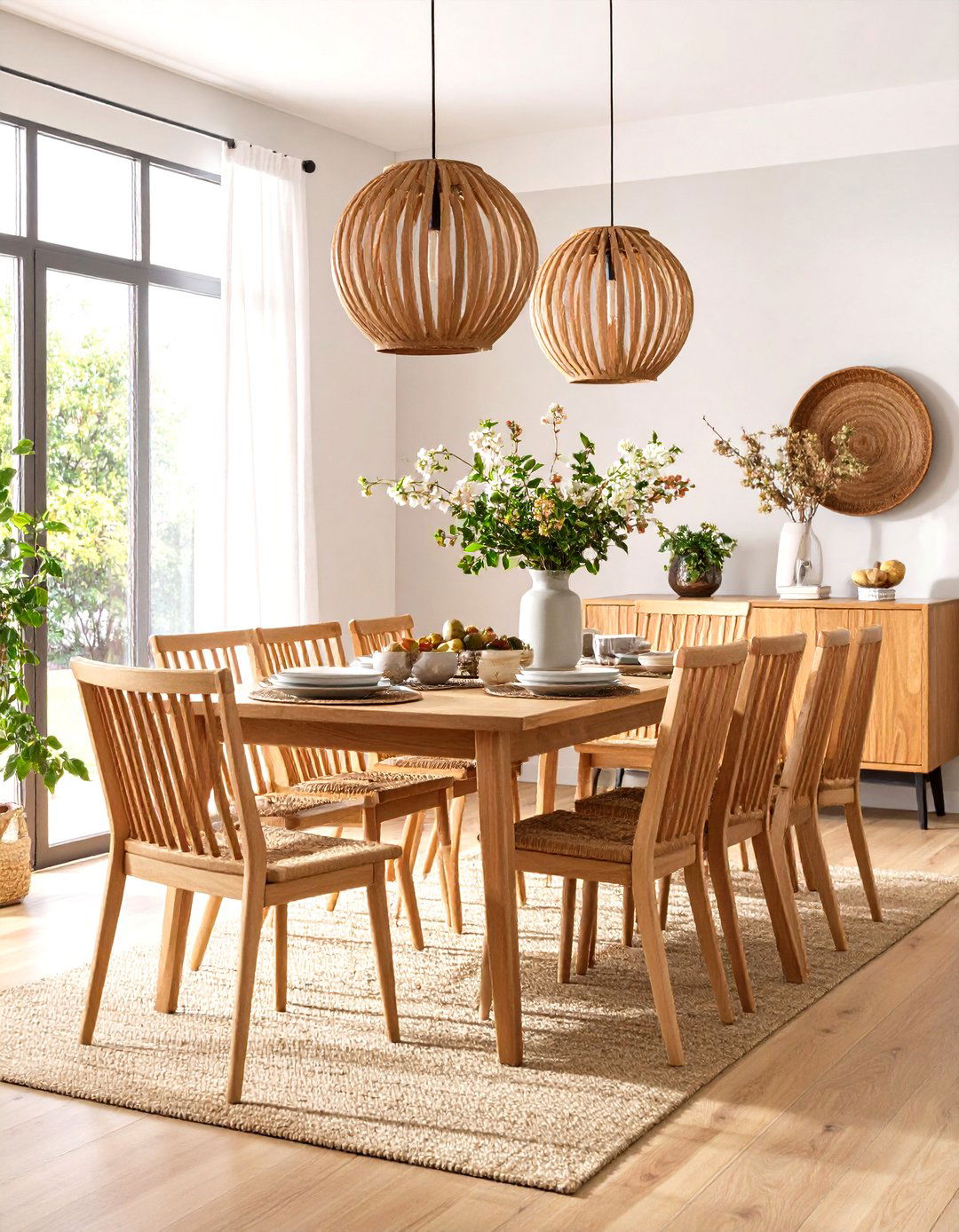
Simplicity in line breeds harmony, and repeating slim vertical slats—on chair backs, sideboard doors, even a plate rail—unifies a Craftsman dining room. Designers like Harvey Ellis refined heavy mission forms by adding airy slat patterns that admitted light while retaining strength. When those same rails echo the mullions in stained-glass windows or cabinet doors, the room reads cohesive and calm. Stick to odd numbers of slats for a pleasing visual rhythm, and sand edges slightly round so they invite touch rather than splinters. This understated motif prevents the rich wood palette from feeling too massive.
18. Picture Rail Gallery Keeps Craftsman Dining Room Art Flexible

A picture rail isn’t just historical—it’s a curator’s best friend. By hanging artwork from adjustable hooks, you can swap paintings for holiday wreaths without touching a nail gun, preserving your plaster forever. The stripe also breaks the wall plane, making ceilings seem taller, and guides the eye horizontally to emphasize bungalow proportions. For modern art, choose thin stainless cable that disappears against dark paint, or embrace traditional brass chains for vintage prints. Because frames hang slightly away from the wall, you’ll avoid scuff marks when chairs bump during lively dinners.
19. French Doors Extend the Craftsman Dining Room Outdoors

On temperate evenings, nothing beats throwing open a pair of simple-paneled French doors so the Craftsman dining room spills onto a covered porch. The classic divided-light pattern echoes interior window mullions and aligns neatly with dining chair slats, blurring interior and exterior architecture. Strategically placing the dining table along the door axis ensures breezes waft across guests without extinguishing candles. Equip the threshold with a low-profile sill so platters glide effortlessly during backyard barbecue feasts, and finish the door frames in the same warm stain as interior beams for seamless visual flow.
20. Layered Textiles Bring Softness to the Craftsman Dining Room

Textiles introduce subtle pattern and quiet comfort amid abundant wood. Start with an unbleached linen tablecloth and layer a woven ginkgo-leaf runner down the center; Arts & Crafts retailers still stock natural-fiber runners sized for modern tables. Seat cushions wrapped in muted block-printed fabric soften the look of mission chairs and encourage diners to linger. Finally, cotton canvas Roman shades filter afternoon sun without hiding sash details. Because each textile is removable, they offer an easy way to shift color palettes seasonally while keeping the enduring craftsmanship of the room untouched.
Conclusion:
Whether you live in a 1910 bungalow or a twenty-first-century condo, these ideas prove that a Craftsman dining room is less about replication and more about celebrating honest materials, nature-inspired hues, and visible craftsmanship. From quarter-sawn oak furniture to copper lanterns and prairie glass, each layer supports the next, creating a space that welcomes slow meals and meaningful conversation. Add or subtract elements at your own pace—start with a hand-knotted rug, install a picture rail, then tackle a built-in sideboard—and you’ll cultivate a room that feels warm, grounded, and unmistakably Craftsman, year after delightful year.


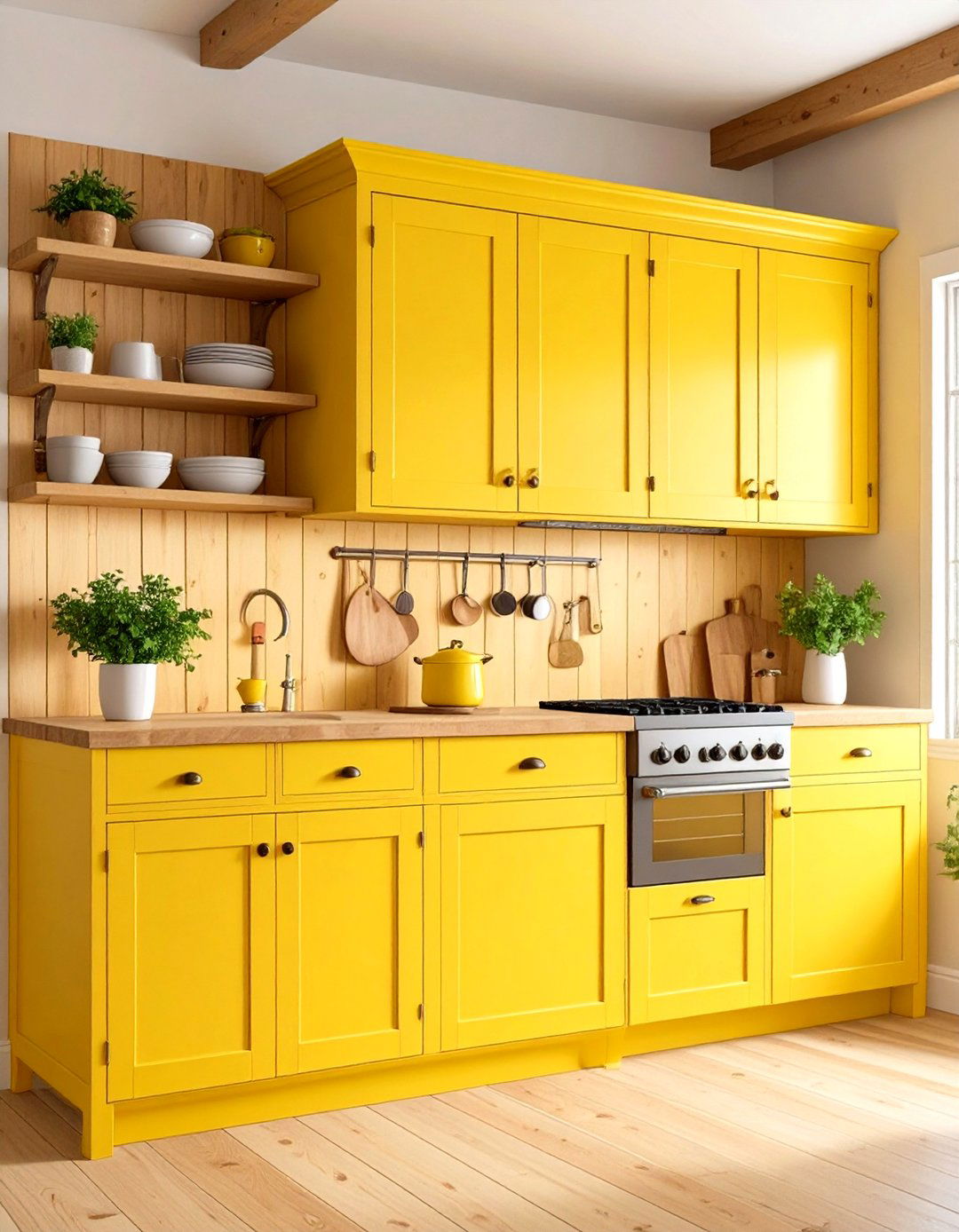
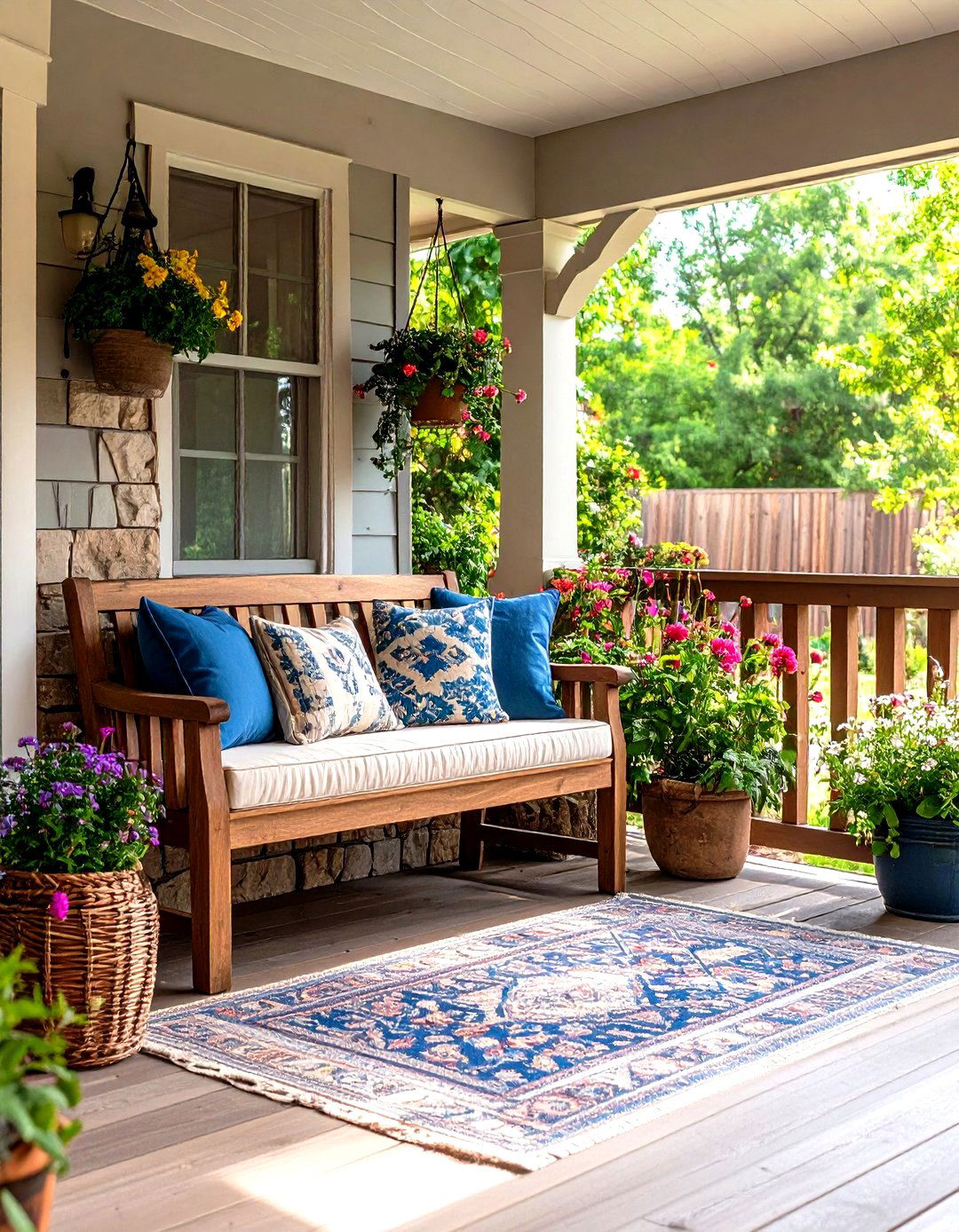
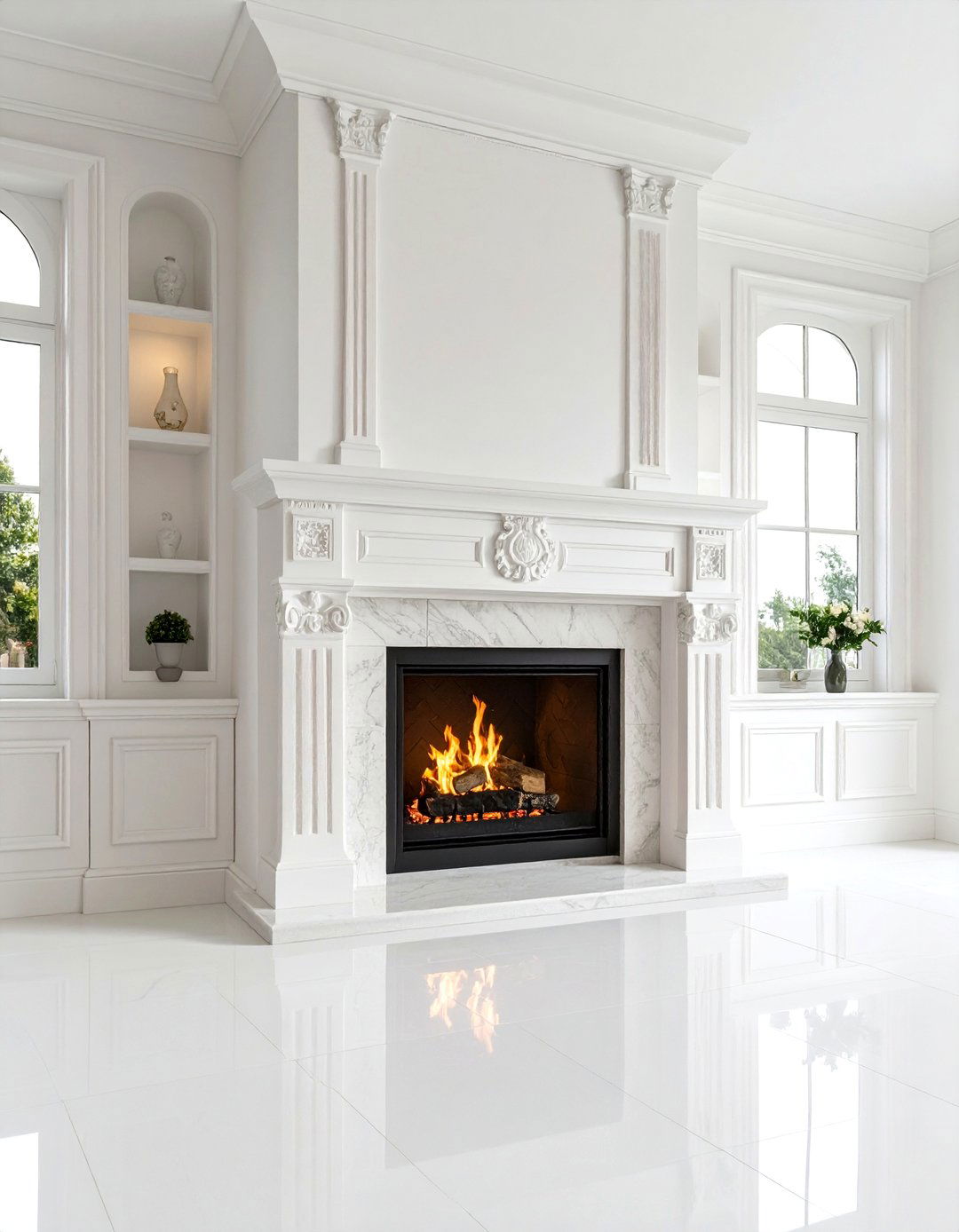
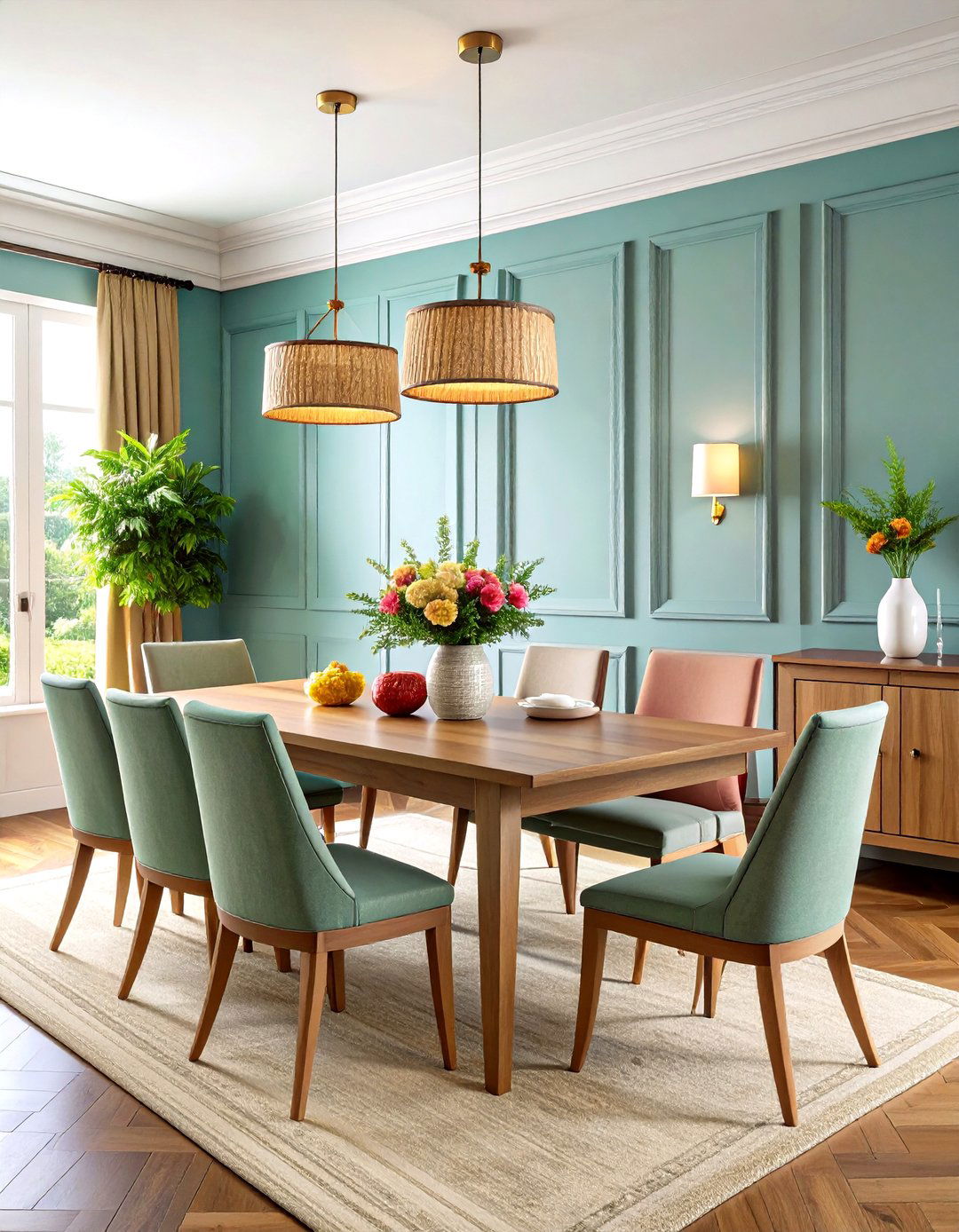


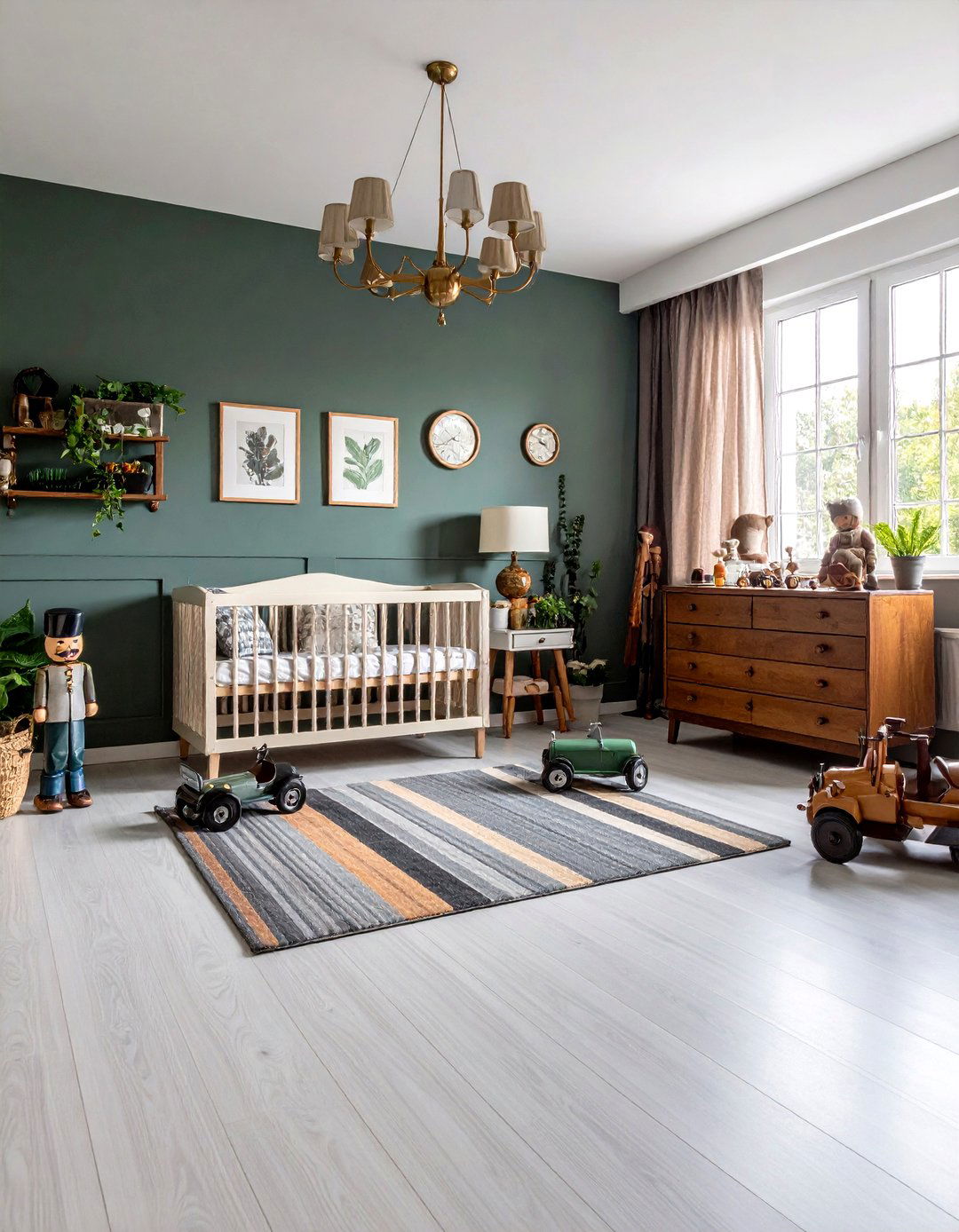
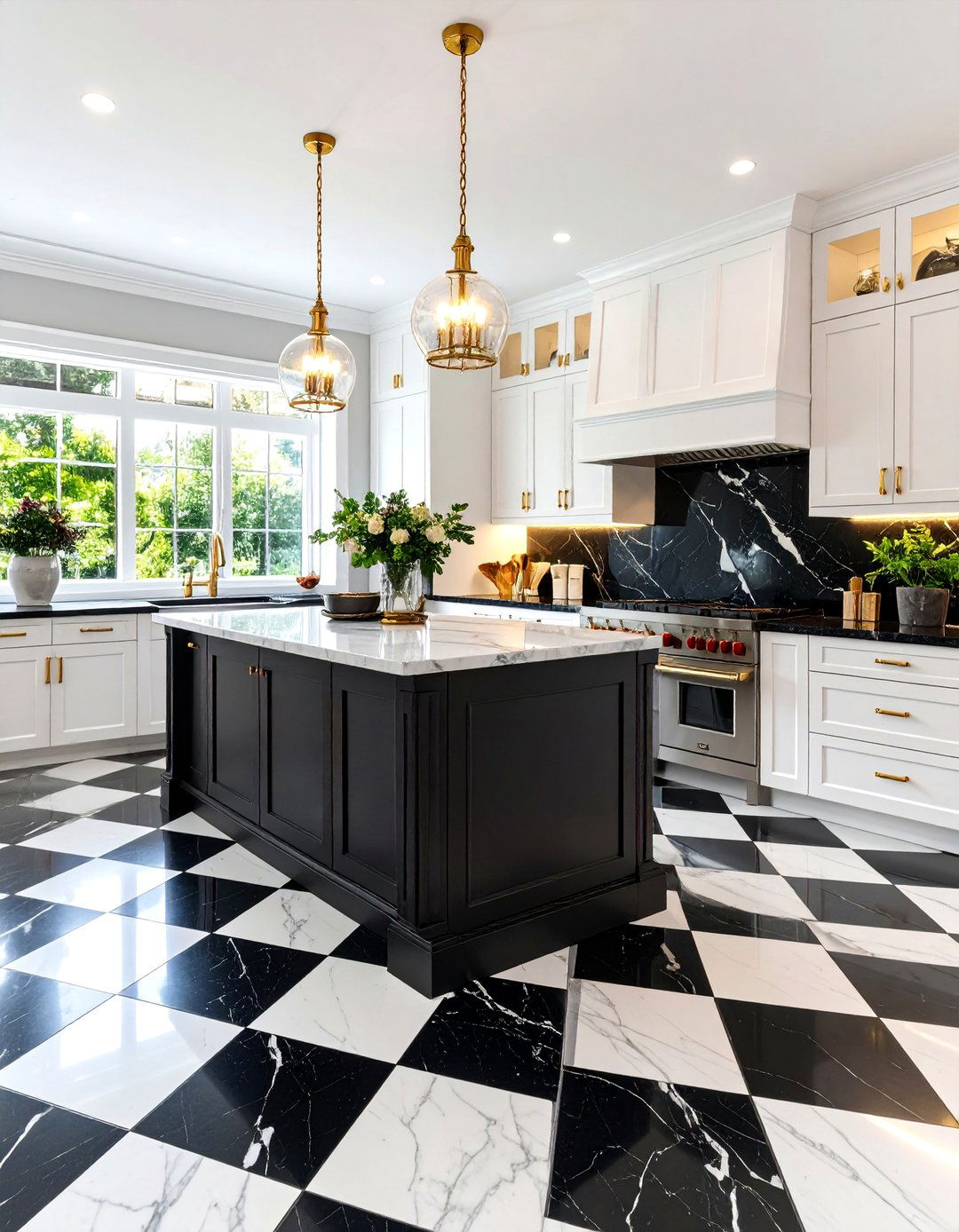

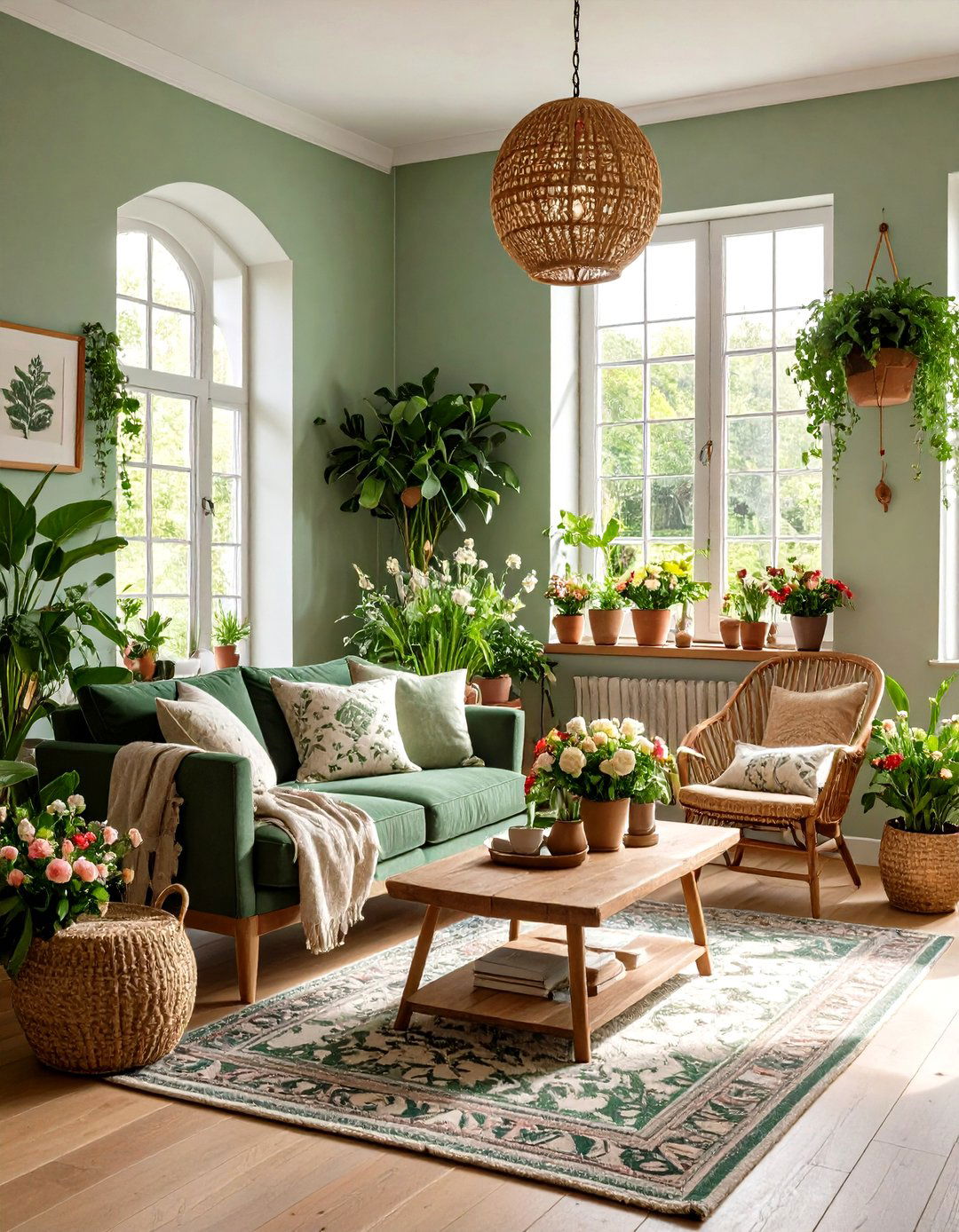
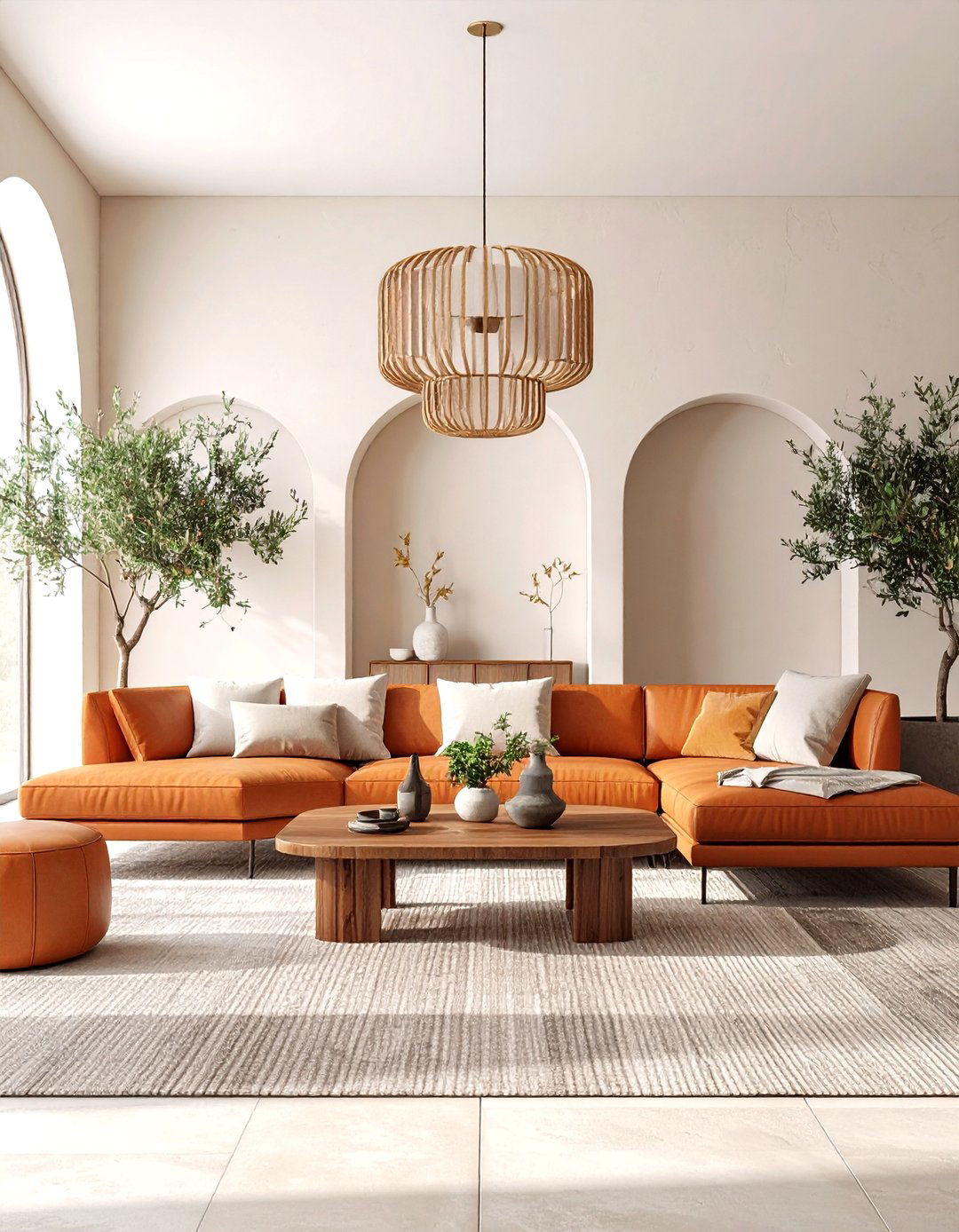
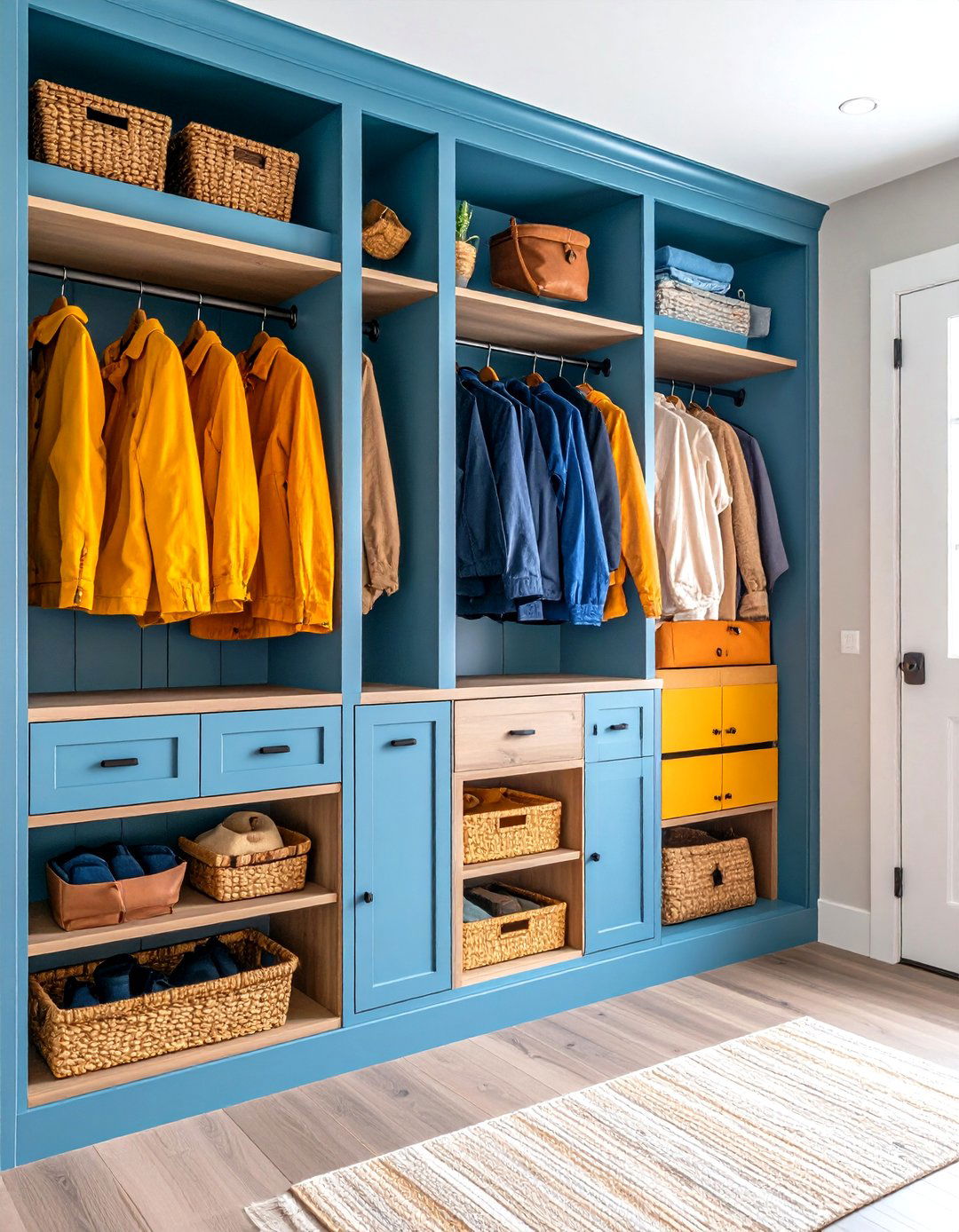
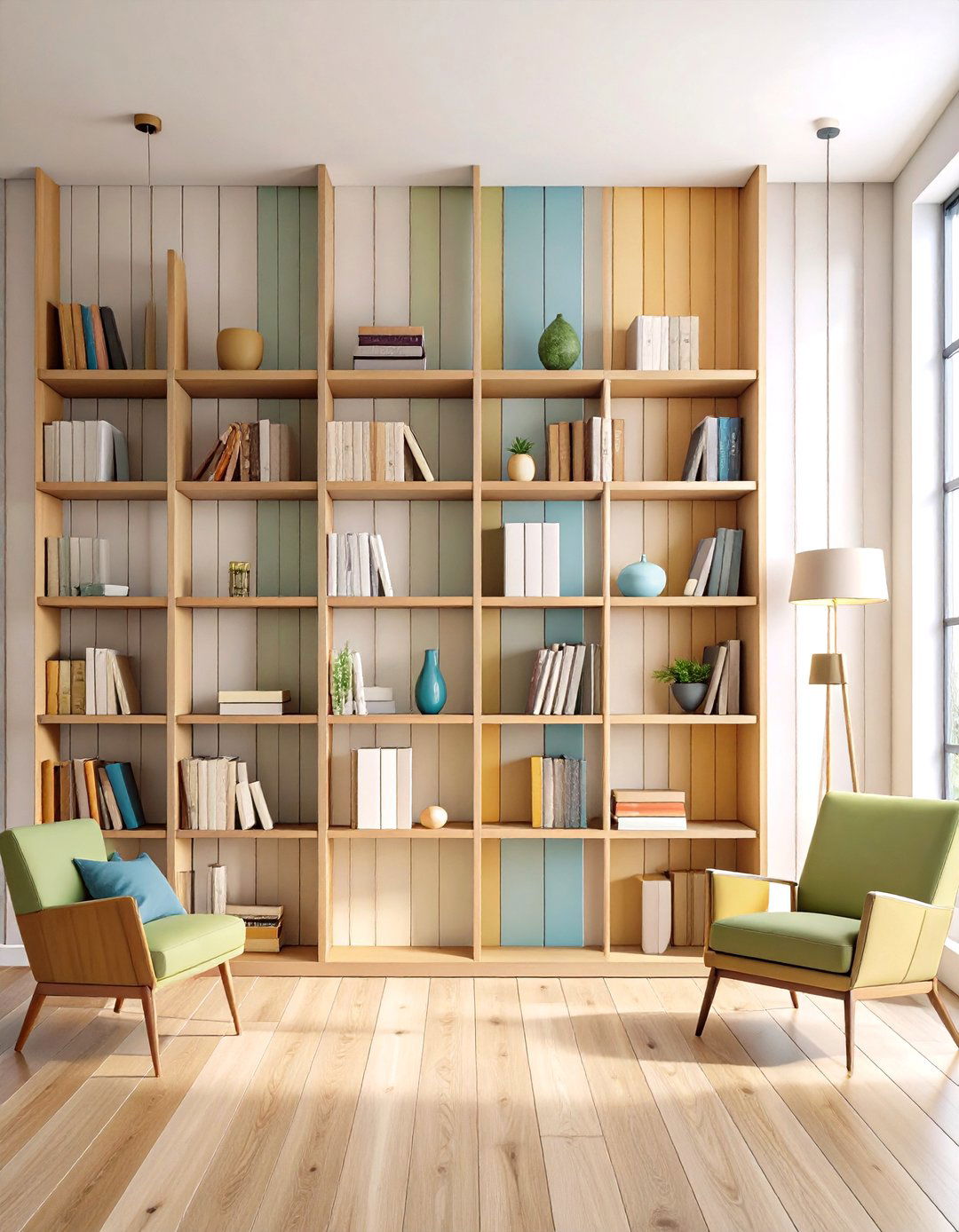

Leave a Reply